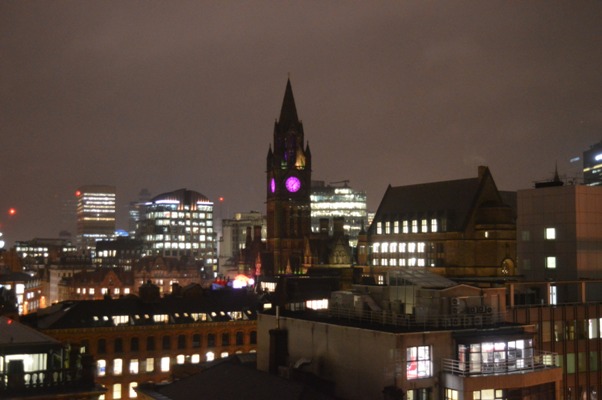First of all, let’s look at some of the good reasons for buying in Manchester city centre:
Manchester has a strong and growing economy, with good prospects for the future – the city is very much the focus of the Northern Powerhouse project to develop the economy of the north of England.
The jobs market here is growing as businesses are expanding or moving into the city – to take advantage of what has become known as ‘north shoring’, with lots of commercial development now underway to support that. That means good demand for property, including from potential tenants if you’re looking to buy to let.
Manchester is also one of Europe’s largest student cities (over 100,000 students) with four universities alone which creates a huge demand for student accommodation.
Manchester has a well established and vibrant city living scene, which is perhaps the best of any UK regional city. The city centre has all the amenities needed for day to day living plus a huge range of shops, bars, clubs, restaurants, music venues, museums and galleries.
Very importantly, property prices in Manchester city centre are still very reasonable for what is one of Europe’s major cities. They are well below the England and Wales national average, and you can still buy or invest for less than £100,000.
You might also find this Property Insider article on Manchester useful.
Are there any downsides to buying in Manchester city centre ?
Perhaps the main downside to buying in Manchester city centre is the huge amount of new residential development that’s now underway, with several new ‘supertall’ residential apartment blocks now underway or having been given planning approval. There’s always a risk that a large amount of new property arriving on the market could make it harder to rent or resell your property, and limit the scope for capital appreciation in the future.
Areas to consider
Like most large cities, Manchester city centre is divided into several different areas. Some of the main city living areas within Manchester city centre which you might want to consider are: Castlefield. The Southern Gateway. Northern Quarter. Deansgate and Spinningfields. Green Quarter. NOMA. Ancoats and New Islington. Salford Quays and Media City. Plus the city of Salford itself.
You might find this indepth article about the pros and cons of the different districts within Manchester city centre as a place to live or invest useful.
Tips when buying in Manchester city centre
* If you’re buying to let, think about what sort of tenant you’ll be trying to attract and what they’ll be looking for in a property.
For example, students usually want to be close to university buildings, which are mainly on the south side of the city centre. Young professionals, on the other hand, are less likely to be interested in renting here. They’ll most likely favour locations that are convenient for wherever they work.
* Think location. Consider proximity to transport and other facilities. Some city centre areas have better facilities than others. Property within close proximity to Piccadilly, Victoria and Oxford Road main line railways stations and Deansgate-Castlefield Metrolink tram station is often more popular as it allows easy access and commuters to ‘commute out’ if they wish.
If you’re buying to let, properties within 10-15 minutes walk of the immediate city centre (think Piccadilly Gardens-Albert Square) should be really popular with tenants.
* Look at what new developments are being planned for the immediate area. Some of the new developments planned for Manchester city centre are sizable, and could affect the demand for and future value of your property.
Then again, new developments can help regenerate an area and make it more pleasant to live in and popular.
* Think quality. Better quality properties in better quality developments may cost a little more to buy, but generally enjoy better rental demand and have better prospects of getting a good resale price in future.
Apartments in period buildings (often converted cotton warehouses) in a waterfront setting – Manchester has lots of canals – with some outside space, open views, building facilities (like gyms) and secure parking are always a plus.
Identikit apartments with no distinguishing features – of which there are a lot in Manchester city centre – can be harder to let or resell simply because there are lots of them and tenants/buyers have plenty to choose from.
When buying, try to choose property which has some unique advantages/selling points which would make it attractive to tenants and future buyers if you want to resell.
Tip. Check ground rents and service charges when buying an apartment. Some developments can have high charges.
Do your own research, and take expert advice. Local estate and letting agents are well placed to advise you on which areas of Manchester city centre best suit your requirements, and what you can expect to get for your budget. If you’re buying to let they can also advise on what demand for that area/that property there is likely to be from tenants, and what level of rent you should be able to achieve.



[…] Property Insider’s Guide To Buying In Manchester City Centre […]